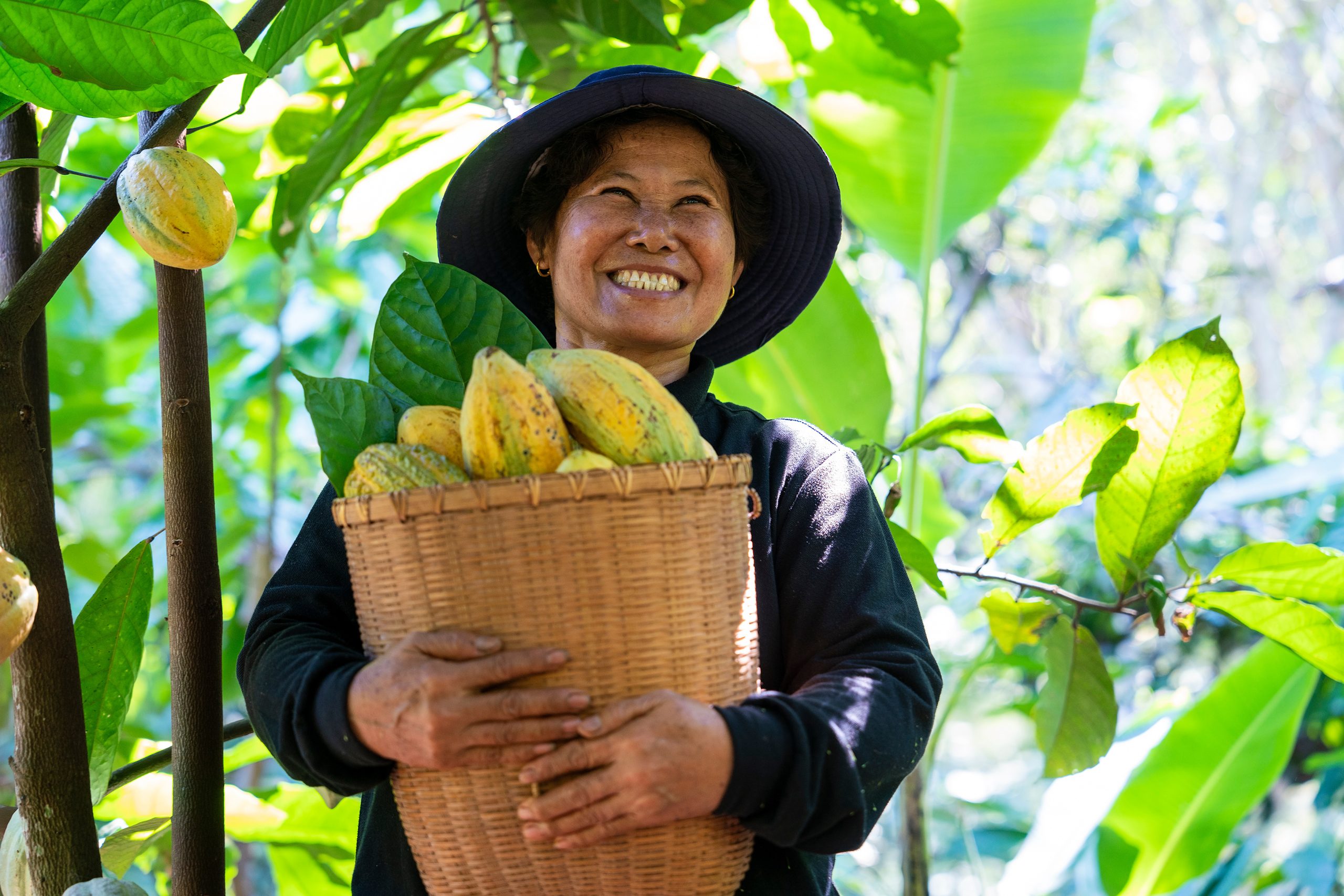Strengthening Grievance Mechanisms to Address Modern Slavery: A Guide to Supporting Worker Voice and Justice
Modern slavery remains an often-hidden reality within global and local supply chains. While awareness is growing, the grievance mechanisms and systems that should support affected individuals are not always doing enough.
Nicholas Bernhardt, CEO of Informed 365, highlights a critical gap between intention and impact when it comes to grievance mechanisms. While over 70% of companies report having such systems in place, fewer than 50% of workers in surveyed global supply chains can access them in their own language (The Mekong Club, 2022). Even fewer see meaningful outcomes: the number of actual grievances reported in modern slavery statements is almost zero, revealing a significant disconnect between policy and practice.
Nicholas points out that there is some progress with larger suppliers (>$100M revenue) increasingly implementing formal grievance systems, with improved access to HR, trade unions, hotlines, and digital tools. However, smaller suppliers, lower-tier operations, and migrant workers are often left behind.
Recent Australian research by Macquarie University’s Business and Human Rights Access to Justice Lab found that only 10 of 25 top companies provided remedial mechanisms for external individuals and communities to raise human rights complaints.
Likewise, the KPMG and Property Council’s 2022 report notes that while grievance mechanisms are recognised as essential in the property and construction sectors, many businesses rely on suppliers’ systems rather than building their own. Implementation remains patchy, inconsistent, and largely ineffective without direct engagement and worker-centric design.
In this guide we bring together insights from leaders in the field, across business, law, humanitarian services, and technology; on what effective grievance mechanisms look like, and how they can be improved to truly support the people they’re meant to protect.
What Makes a Grievance Mechanism Work?
Grievance mechanisms come in many forms:
- Informal options like worker forums and community-based organisations
- Formal corporate channels like complaint procedures and codes of conduct
- Independent third-party providers and anonymous hotlines
- Certification body complaints systems (e.g. Cleaning Accountability Framework)
- Trade union processes and statutory bodies (e.g. Fair Work Commission)
Regardless of format, effective mechanisms share a common foundation. Robin Mellon, CEO of Better Sydney, outlines eight essential elements for success:
The 8 Essential Elements of Effective Grievance Mechanisms
- Legitimate – Mechanisms must be trustworthy and accountable.
- Accessible – Workers must know they exist and be able to use them easily, with support if needed.
- Predictable – Steps, timelines, and potential outcomes should be clearly outlined.
- Equitable – Users must be treated fairly and given access to relevant expertise and information.
- Transparent – Stakeholders should have insight into how the mechanism functions and performs.
- Rights-Compatible – Outcomes must respect and uphold international human rights standards.
- Continuous Learning – Feedback from users should be used to improve processes.
- Dialogue-Based – Workers and affected parties must be engaged in the design and review of mechanisms.
Effective grievance mechanisms are not one-off interventions, they are part of a broader remediation pathway. After an issue is raised, organisations must commit to:
- Safeguarding individuals’ rights
- Understanding the harm and the organisation’s role
- Using leverage to address root causes
- Implementing remedies that are just and appropriate
- Preventing future harm through systems improvement
Supporting People Through the Process
Natalie Maxwell-Davis, from the Australian Red Cross, brings critical insight into the real-life experiences of survivors in Australia. Since 2009, Red Cross has supported more than 750 individuals through the Support for Trafficked People Program (STPP) – many of whom only learned they were experiencing modern slavery once they accessed help.
One survivor shared:
“I had not even heard of the term modern slavery until I came into the Red Cross program.”
The Work Right Hub, developed by the Australian Red Cross, is a digital platform aimed at preventing and addressing labour exploitation. It provides both workers and responders with tools to recognise exploitation and find support, including:
- A decision-tree tool to connect with free, confidential services
- Basic rights checklists and workplace tips
- Survivor stories to foster awareness
- Multilingual flyers and brochures
Natalie highlights seven key actions for improving grievance mechanisms:
- Provide clear, accessible information for workers and suppliers
- Use inclusive and supportive language
- Raise awareness and encourage reporting
- Break down barriers to access
- Develop and test response procedures
- Engage workers in reviewing and refining systems
- Support suppliers to strengthen their own grievance processes
What Happens After You Speak Up?
Lauren Dale, of Anti-Slavery Australia, emphasises that grievance mechanisms must support survivors beyond the initial disclosure. Many people fear that speaking up may jeopardise their visa, employment, or safety, and these fears are not unfounded.
Quotes from survivors reflect this anxiety:
- “Will I lose my visa?”
- “Will my family and I be safe after this?”
- “Do they actually care about what happens to me?”
Too often, survivors are left with unanswered questions and minimal support:
“They said they weren’t responsible, but it was their products I packed.”
Anti-Slavery Australia’s work, including legal support, research, and training, continues to push for stronger systems and survivor-centered responses. One major recommendation is the establishment of a National Compensation Scheme, to ensure all survivors can access meaningful justice and recovery.
Amplifying Worker Voice at Scale
Mark Taylor, from the Issara Institute, shared how worker-centered grievance mechanisms can be implemented at scale across global supply chains. Issara’s model places worker voice at the heart of ethical sourcing by integrating multiple communication channels, including:
- Golden Dreams App – A job platform with reviews, guides, alerts, and a “Yelp-like” rating system
- Multilingual helplines – Available 24/7 in languages including Khmer, Lao, Thai, Bengali, and more
- Direct outreach – On-the-ground teams engage with communities, workers, and partners
With over 300,000 workers engaged and up to 20,000 monthly calls and messages, Issara operates one of the largest independent worker voice systems in the world.
Mark stresses the importance of moving from audit-based compliance to worker-driven human rights due diligence. This approach strengthens trust, drives systemic improvements, and centers the experiences and needs of workers.
Visit: Worker Voices
Everyone Has a Role to Play
Creating better grievance mechanisms requires collaboration across every level of business, government, and society. Whether you’re in procurement, operations, HR, legal, or advocacy, there’s something you can do:
- Refer people to organisations that provide legal aid, support, and safe reporting channels
- Collaborate with experts to build more responsive and inclusive systems
- Provide feedback on existing grievance tools and platforms
- Donate or volunteer with frontline organisations advancing worker rights
- Keep the conversation going—raise awareness, listen to survivor voices, and advocate for justice
To hear more about how Informed 365 can support you to identify and mitigate modern slavery risk in your supply chain, while streamlining your annual reporting and Modern Slavery Statement process, book a demo here.
Further Resources
Free Webinar
To learn more from the experts featured in this article, watch our free one-hour webinar.
View Webinar


